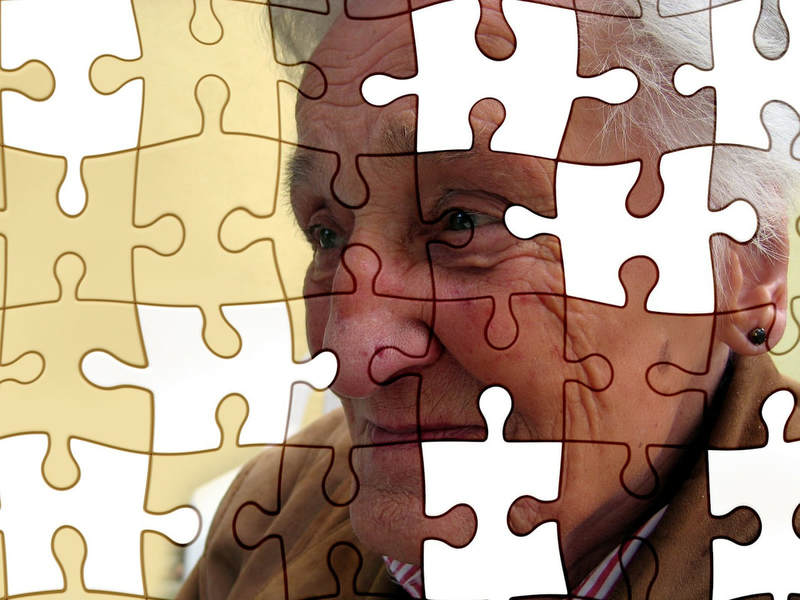Measuring the Relationship Between Physical Activity and Progression of Alzheimer’s
Alzheimer’s disease (AD) is an irreversible mental disorder usually marked by loss of memory, decrease in cognitive skill (one’s ability to perform mental activities), mood changes, and impaired judgment. The risk of developing Alzheimer’s usually increases with age and with the presence of genetic mutations. Carriers, those who carry a gene mutation associated with Alzheimer’s disease, have an increased risk of developing symptoms. Some people, known as asymptomatic mutation carriers, may simply carry a gene mutation but never develop symptoms in their lifetime. In contrast, symptomatic mutation carriers carry a mutated gene and express symptoms.
Previous studies have suggested that physical activity, such as exercise, can improve cognitive function in healthy elderly people, those at risk of Alzheimer’s, and those with dementia. A recent study conducted by a group of scientists for the Dominantly Inherited Alzheimer’s Network has focused explicitly on autosomal dominant AD and its relationship with physical activity. Autosomal dominant Alzheimer’s disease is a rare form of AD and is also known as “early-onset Alzheimer’s” because symptoms manifest in patients aged 65 or younger. Autosomal dominant Alzheimer’s is a specific type of early-onset Alzheimer’s that runs in the family and is linked to genetic causes.
Previous studies have suggested that physical activity, such as exercise, can improve cognitive function in healthy elderly people, those at risk of Alzheimer’s, and those with dementia. A recent study conducted by a group of scientists for the Dominantly Inherited Alzheimer’s Network has focused explicitly on autosomal dominant AD and its relationship with physical activity. Autosomal dominant Alzheimer’s disease is a rare form of AD and is also known as “early-onset Alzheimer’s” because symptoms manifest in patients aged 65 or younger. Autosomal dominant Alzheimer’s is a specific type of early-onset Alzheimer’s that runs in the family and is linked to genetic causes.
Image Source: MabelAmber
This recent study took participants from members of the Dominantly Inherited Alzheimer Network (DIAN) - an observational study whose participants are at risk for known mutations that cause AD - and measured and compared the progression of Alzheimer’s to the length of physical activity experienced by each participant.
The study measured several aspects of each participant in order to measure their cognitive and biological levels. First, researchers measured cognitive function using the Clinical Dementia Rating (CDR) scale, which measures an individual’s memory, judgment and problem-solving skills, community affairs, orientation, home and hobbies, and personal care. Cognitive ability was further measured using the Mini Mental State Examination (MMSE). The estimated years to symptom onset (EYO) was also calculated for each participant by subtracting a participant’s age from the age of their parents or relative at the time their symptoms developed. Concentrations of cerebrospinal fluid (CSF) were also measured; CSF is a biomarker, a substance in our bodies whose concentration can give insight into an individual’s health status. Participants each answered a questionnaire asking for their physical activity duration - the amount of time spent doing physical activity - and the self-reported time was also verified through a collateral source (like a family member or friend).
Results showed that mutation carriers with longer physical activity durations (those who exercised more) scored lower on the CDR (the lower the score, the more mild the dementia), better scores on the MMSE, and lower levels of CSF. Thus, participants who spent longer time engaging in physical activities showed slower progression levels of Alzheimer’s, even after controlling for age.
The study recommends, therefore, spending at least two and a half hours per week doing physical activities, as people who spent at least two and a half hours per week had noticeably slower progression of the disease. Additionally, this is also the duration of time needed to stay healthy, as recommended by the World Health Organization. It is important to note, however, that this study simply proves a significant relationship between physical activity and development or progression of Alzheimer’s. The study does not prove causality: it does not prove that more physical activity leads to lower rates of Alzheimer’s. It could simply be that people whose Alzheimer’s worsens decrease the amount of time they spend engaging in physical activity. However, the study does show promising information in regards to the correlation between exercise and the development of Alzheimer’s. Thus, it is still recommended that people engage in exercise to slow and prevent the progression of Alzheimer’s.
The study measured several aspects of each participant in order to measure their cognitive and biological levels. First, researchers measured cognitive function using the Clinical Dementia Rating (CDR) scale, which measures an individual’s memory, judgment and problem-solving skills, community affairs, orientation, home and hobbies, and personal care. Cognitive ability was further measured using the Mini Mental State Examination (MMSE). The estimated years to symptom onset (EYO) was also calculated for each participant by subtracting a participant’s age from the age of their parents or relative at the time their symptoms developed. Concentrations of cerebrospinal fluid (CSF) were also measured; CSF is a biomarker, a substance in our bodies whose concentration can give insight into an individual’s health status. Participants each answered a questionnaire asking for their physical activity duration - the amount of time spent doing physical activity - and the self-reported time was also verified through a collateral source (like a family member or friend).
Results showed that mutation carriers with longer physical activity durations (those who exercised more) scored lower on the CDR (the lower the score, the more mild the dementia), better scores on the MMSE, and lower levels of CSF. Thus, participants who spent longer time engaging in physical activities showed slower progression levels of Alzheimer’s, even after controlling for age.
The study recommends, therefore, spending at least two and a half hours per week doing physical activities, as people who spent at least two and a half hours per week had noticeably slower progression of the disease. Additionally, this is also the duration of time needed to stay healthy, as recommended by the World Health Organization. It is important to note, however, that this study simply proves a significant relationship between physical activity and development or progression of Alzheimer’s. The study does not prove causality: it does not prove that more physical activity leads to lower rates of Alzheimer’s. It could simply be that people whose Alzheimer’s worsens decrease the amount of time they spend engaging in physical activity. However, the study does show promising information in regards to the correlation between exercise and the development of Alzheimer’s. Thus, it is still recommended that people engage in exercise to slow and prevent the progression of Alzheimer’s.
Featured Image Source: geralt
RELATED ARTICLES
|
Vertical Divider
|
Vertical Divider
|
Vertical Divider
|






